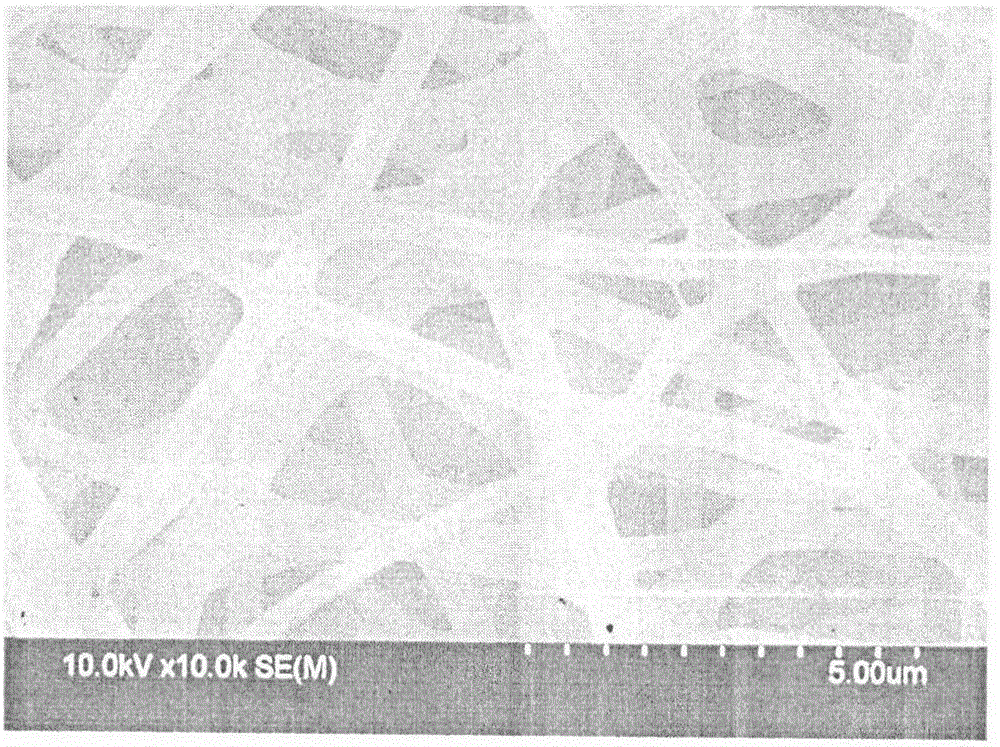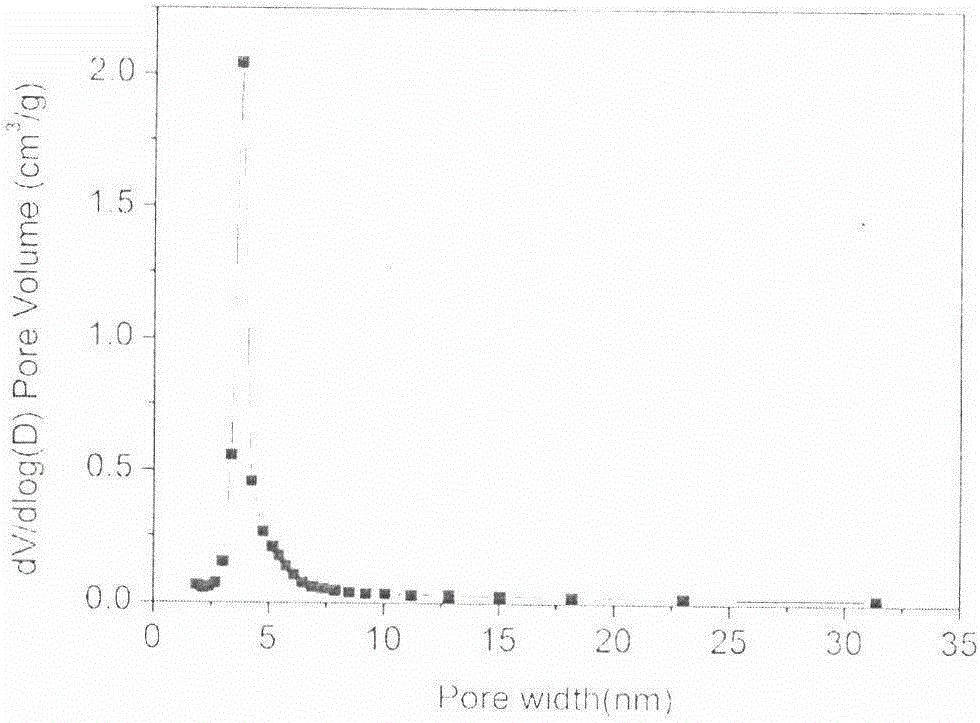Preparation method of ordered mesoporous carbon nanofibers
A nano-carbon fiber and orderly technology, applied in the field of nano-porous carbon fiber preparation, to achieve the effects of high mesoporosity, high carbon yield, and good chemical stability
- Summary
- Abstract
- Description
- Claims
- Application Information
AI Technical Summary
Problems solved by technology
Method used
Image
Examples
Embodiment 1
[0030] A method for preparing ordered mesoporous carbon nanofibers, comprising the following steps:
[0031] (1) Preparation of ethanol solution of phenolic resin / polyvinylpyrrolidone / triblock copolymer / inorganic salt
[0032] First dissolve the block copolymer F127 in absolute ethanol, and stir at -10°C to obtain a homogeneous solution. After 10 minutes, magnesium nitrate was added, and the mass ratio of inorganic salt to phenolic resin was 1:2. Continue stirring until completely dissolved. Then add phenolic resin ethanol solution (average molecular weight is 500), the ratio of phenolic resin and block copolymer is 1:2. Stirring was continued for 2h. Finally, polyvinylpyrrolidone was added, and the mass fraction of polyvinylpyrrolidone was 3%. After stirring for 10 h, a homogeneous solution was obtained. The mixed solution was subjected to defoaming treatment, and then sealed and stood at room temperature for 1 day to obtain a spinning solution.
[0033] (2) Preparation...
Embodiment 2
[0041] A method for preparing ordered mesoporous carbon nanofibers, comprising the following steps:
[0042] (1) Preparation of ethanol solution of phenolic resin / polyvinylpyrrolidone / triblock copolymer / inorganic salt
[0043] First dissolve the block copolymer P123 in absolute ethanol and stir at 45°C to obtain a homogeneous solution. After 10 minutes, ferric chloride was added, and the mass ratio of inorganic salt to phenolic resin was 2:1. Continue stirring until completely dissolved. Then add phenolic resin ethanol solution (average molecular weight is 1000), the ratio of phenolic resin and block copolymer is 2:3. Stirring was continued for 3h. Finally, polyvinylpyrrolidone was added, and the mass fraction of polyvinylpyrrolidone was 4%. After stirring for 13h, a homogeneous solution was obtained. The mixed solution was subjected to defoaming treatment, and then sealed and stood at room temperature for 1.5 days to obtain a spinning solution.
[0044] (2) Preparation ...
Embodiment 3
[0052] A method for preparing ordered mesoporous carbon nanofibers, comprising the following steps:
[0053] (1) Preparation of ethanol solution of phenolic resin / polyvinylpyrrolidone / triblock copolymer / inorganic salt.
[0054] First dissolve the block copolymer F127 in absolute ethanol, and stir at 50°C to obtain a uniform solution. After 10 minutes, add magnesium chloride, and the mass ratio of inorganic salt to phenolic resin is 3:1. Continue stirring until completely dissolved. Then add phenolic resin ethanol solution (average molecular weight is 1500), the ratio of phenolic resin and block copolymer is 1:2. Stirring was continued for 4h. Finally, polyvinylpyrrolidone was added, and the mass fraction of polyvinylpyrrolidone was 5%. After stirring for 16h, a homogeneous solution was obtained. The mixed solution was subjected to defoaming treatment, and then sealed and allowed to stand at room temperature for (2) days to obtain a spinning solution.
[0055] (2) Preparat...
PUM
| Property | Measurement | Unit |
|---|---|---|
| diameter | aaaaa | aaaaa |
| specific surface area | aaaaa | aaaaa |
| pore size | aaaaa | aaaaa |
Abstract
Description
Claims
Application Information
 Login to View More
Login to View More - R&D
- Intellectual Property
- Life Sciences
- Materials
- Tech Scout
- Unparalleled Data Quality
- Higher Quality Content
- 60% Fewer Hallucinations
Browse by: Latest US Patents, China's latest patents, Technical Efficacy Thesaurus, Application Domain, Technology Topic, Popular Technical Reports.
© 2025 PatSnap. All rights reserved.Legal|Privacy policy|Modern Slavery Act Transparency Statement|Sitemap|About US| Contact US: help@patsnap.com



